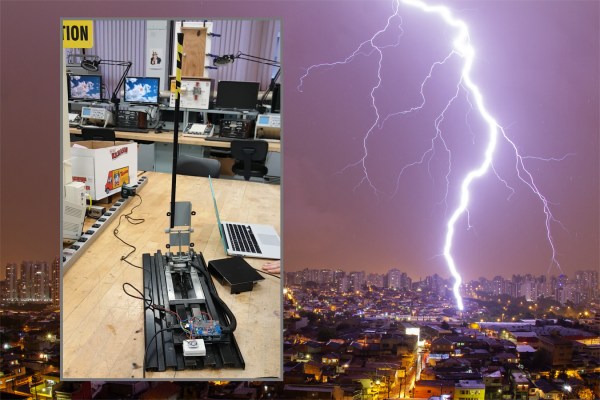As hackers, hams, and builders of all sorts of things that go in our yards or are attached to our houses we often encounter resistance from building associations and by-laws regarding what to us are harmless necessities but to others are risks to their sight-lines, property values, or are seen as safety hazards. A student at the Bergen County Academies Mechatronics Research Lab has identified this same issue with lightning rods for homes, monuments, and buildings of fine architecture; people don’t want to add unsightly lightning rods despite their proven protections. Her solution? Detect when a storm is approaching and automatically deploy the lightning rod for the duration of the storm.
To detect the approaching storm she’s monitoring the changing barometric pressure using an Adafruit BMP085 barometric pressure, temperature and altitude sensor (now replaced by the BME280) connected to an Arduino with a motor shield. If the pressure is low and the trend has been decreasing then she pivots the lightning rod up using a motor salvaged from a satellite dish. When the risk abates, she pivots the rod back down again. Admittedly the lightning rod has yet to be attached and care will have to be taken with how the discharge cable is deployed but it’s a start. You can see it in action in the video below.















